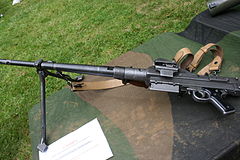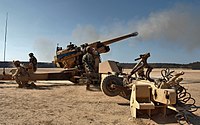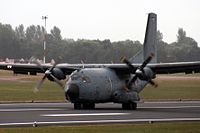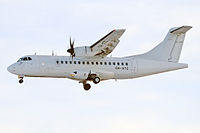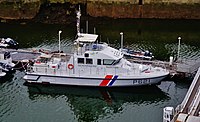Talaharan Black Guard Corps
| TCDF Black Guard Corps | |
|---|---|
| ⵛⴰⵛⵀⴰⵜ ⵉ’ⴷⴰⴼⵯⴰⵯⴰⴱⴰⵛⴰⵏ Šašhat I’Daf’a’abašan | |
Roundel of the Talaharan Black Guard Corps | |
| Active | Since 1836 |
| Country | |
| Type | Militia |
| Role | Land warfare |
| Size | 119,500 |
| Part of | Talaharan Commune Defense Forces |
| Colour | Black |
| Engagements | List |
| Commanders | |
| Commander-in-Chief | Executive Council |
| Executor of Defense | Taos Jebar |
| Defense Committee Senior Representative | District Colonel Akzi 'Albun |
| Defense Committee Enlisted Representative | Sergeant Amastan Tsahana |
The Talaharan Black Guard Corps (Takelat: Šašhat I’Daf’a’abašan N'Talahara; ⵛⴰⵛⵀⴰⵜ ⵉ’ⴷⴰⴼⵯⴰⵯⴰⴱⴰⵛⴰⵏ ⵏ'ⵜⴰlⴰⵀⴰⵔⴰ), officially the Talaharan Commune Defense Forces Black Guard Corps and commonly referred to as the Black Guards, is a community militia branch or national guard of the Talaharan Commune Defense Forces. Both the oldest and largest branch of the TCDF, the Black Guard Corps is a volunteer organization of part-time members. The Black Guard Corps's members live in their own communities and work in normal industries. However, they also dedicate a significant amount of time to training and other activities associated with the national defense of Talahara. On average, Black Guards have a greater number of training hours than reservists in most armies, though proportionally they dedicate more time to service. In addition, Black Guards are limited to territorial defense and cannot assist in offensive actions or deployments. The term "Black Guard" can be used to refer to the Black Guard Corps as a whole, regiment-sized guard units in the force, or individual members of the force, interchangeably.
Unlike the rest of the TCDF, the size of the Black Guard Corps is not limited by statute. As of 2022, the total number of Black Guards is 119,500. This equates to an average of 95 service members per commune, though the distribution of Black Guard units is not consistent across the country. Many of these members are not standard militia members of the Black Guard Corps, but rather perform administrative functions for the branch or other service branches of the TCDF. The typical commune is thus able to support two platoons of combat-ready Black Guards.
While small units of the Black Guard Corps maintain the typical Talaharan advancement system based on elections and seniority, the appointment of officers differs. Rather than qualified candidates being put forward for election, Communal Legislative Councils appoint officers subject to ratification by the entire commune. Units that span multiple communes are subject to coordination between Communal Councils. At the Defense Committee, the Black Guard Corps has two seats as with any other branch. The senior representative is District Colonel Akzi 'Albun. The enlisted representative is Sergeant Amastan Tsahana.
History
Origin
The Black Guards emerged in the early period of the Talaharan Civil War as peoples' militias opposed to both the Third Talaharan Kingdom and the competing Liberal Republic of Talahara. The organization of different Black Guard units varied greatly, but in general the militias were radically democratic units who accepted combatants from all walks of life. The name of the forces came from the black banners and armbands the members used to identify with the people's cause. The first Black Guard movements carved out independent communities, some forming alliances with neighbouring communities. With the arrival of Ziri Akli, a revolutionary scholar and organizer in February 1836, the Commune Council was founded as a central coordinating body for the various Black Guard units.
By April 1836, the Black Guards was between 8,000 and 9,000 strong. The Commune Council had convinced many units to consolidate a foothold in Takalt. For many, this meant abandoning villages, fields, and mines to pick up arms and fight the monarchists and capitalists. By mid-summer, the area from the hills west of Takalt to the Tyreseian border were under Communard control. The fall of 1836 brought another coup for the Communards as the 3rd, 5th, and 6th regiments of the Royal Talaharan Army defected to their cause, forming the Central Commune Army. In the west of the country, Yisraeli forces landed in northern Kirthan and annexed the region into a protectorate. Many of the displaced residents fled east to join the Communards.
Over the next year, the Third Kingdom was battered into a few noble household guards and warlords. The Liberal Republic and the Commune Council remained the two major belligerents of the conflict. While the Central Commune Army became the driving force of Communard offenses, the Black Guards defended against Republican raids and offenses, reinforced cities and forts, and protected workers. In January 1838, Communard forces had encircled the capital of Maktarim. A short-lived Black Guard Navy was organized to counter Republican ships, quickly succeeding in locking down the harbour.
The Liberal Republic of Talahara fell in June 1838. The Commune Council convened and set a mandate of writing a new constitution for the country but also arrived at a consensus for the interim form of governance. One of the interim measures called for the dissolution of the Central Commune Army, leaving the Black Guards as the sole military power in the United Communes, albeit a decentralized and democratic force.
Modern form
In the years following the Civil War, the Black Guards were largely demobilized to their home communities. Despite demobilization for most units, the retained cohesion, training, and supplies made them a major stabilizing factor and successfully dissuaded foreign invasions and opposition to the revolutionary state. Many other units remained engaged in hunting down remnant monarchist and capitalist warbands. At the same time, the Black Guards struggled to remobilize into a large-scale offensive force. Plans to retake northern Kirthan from the Yisraeli-backed Protectorate of Tarshish never came to fruition.
In order to supplement the land power of the Black Guards and protect the Talaharan stretch of the Rubric Coast, the Talaharan Navy was founded in 1845. The Black Guards's irregular nature and niche of territorial defense was further enshrined in 1854 with the formation of the Talaharan Army Corps, one year after the Talaharan Navy and the Black Guards were renamed to the Navy Corps and Black Guard Corps, respectively.
Over the course of the next century, the Black Guards remained an important civic and military fixture in a defensive capacity. However, the Black Guard Corps was not mobilized for either the Annexation of Amara, nor the Liberation of Kirthan. During the Social War, a number of Talaharan Black Guards were likely among Tyreseian volunteers who travelled to Latium to assist the Latin Social Republic. The effort ultimately failed and the Social Republic fell in 1947. As offensive participation fell beyond the mandate of the branch, any evidence of Black Guard activity in the war effort was suppressed, though culturally some fighters were seen as martyrs for international socialism.
In the present day, Black Guards have less cultural capital but remain an important component of the TCDF. Many administrative and auxiliary tasks in the unified armed forces are fufilled by semi-civilian specialists who operate through the Black Guards. Furthermore, the Black Guard Corps is relied upon for national defense plans and a significant amount of personnel and equipment.
Structure and organization
| Western District | Northern District | Central District | Southern District | Eastern District |
|---|---|---|---|---|
|
|
|
|
|
The structure of the Black Guard Corps differs significantly from that of the Army Corps, adhering more closely to the legislative structure of the United Communes of Talahara than to military organization. Each commune raises a company of Black Guards. The size of a company can vary between two and four platoons. Auxiliary staff such as medical professionals and administrators are siloed off into auxiliary companies. At present, there are 1,250 communes in Talahara and thus there are 1,250 Black Guard companies of varying strengths.
Groups of 25 companies are made into "black guards", regiment-equivalent units which are organized at the Regional Council-level. Each black guard is subdivided into five battalions, each with five companies. Black guards generally count between 2,300 and 2,500 troops. At least one of the five battalions in a black guard is a tank battalion. Three of the five battalions are infantry battalions. Mechanization is rare and most are simple light infantry. The last battalion is an artillery battalion. There are 50 black guards in Talahara, distributed across five military districts.
The auxiliary forces of the Black Guard Corps are also organized into auxiliary guard units at the Superior Council level. An auxiliary guard may be an auxiliary administrative guard or an auxiliary medical guard unit. These units maybe seconded on a long or short term basis to the administrative or medical divisions of other branches.
The core of the Black Guard Corps's military doctrine is area defense, primarily in defense-in-depth. While Black Guard companies are raised in local communities, black guard units are frequently deployed around the country for exercises and enacting defense plans. In case of invasion, the Black Guard Corps can activate and mobilize units from across the country to assume positions and deploy defenses. Different defense plans exist for a number of scenarios, including land, sea, and air invasions from each cardinal direction, or multiple invasions at once.
The most common strategic unit in battle organization is the battalion. Groups of battalions are occasionally grouped together for large-scale manoeuvres, particularly groups of tank battalions taken from a cross-section of black guards in a district. Due to an emphasis on static defense and unit cohesion for comparatively untrained groups, however, units smaller than a battalion are rarely accounted for in battleplans.
Equipment
Infantry equipment
| Personnel protection | |||||
|---|---|---|---|---|---|
| Model | Image | Origin | Type | Notes | |
| T42 | Combat helmet | Constructed from proprietary polyethylene fibres, protects against fragmentation and pistol-calibre bullets | |||
| FA40 | Gas mask | Includes a voicemitter, a drinking system, and ambidextrous filter mounting, filters up to 17 different agents | |||
| Small arms | |||||
| Model | Image | Origin | Type | Calibre | Notes |
| J28T2 | Assault rifle | 7.5×35mm | Standard service rifle | ||
| J12 | Battle rifle/designated marksman rifle | 7.5×54mm | Rear echelon rifle and DMR | ||
| J94/6T4 | Designated marksman rifle | 7.5×54mm | Former service rifle, DMR | ||
| AK00 | Pistol | 9×25mm 10×25mm |
Standard service pistol | ||
| SK2T3 | Medium machine gun | 7.5×54mm | Section support weapon | ||
| Personnel ordnance | |||||
| Model | Image | Origin | Type | Notes | |
| GG40 | Infantry mortar | Fires 51mm HE or smoke grenades and 47mm flares | |||
| OG1 | Grenade | Explosive weight of 60g, 3-5 second fuse | |||
| OGU37 | Rocket-propelled grenade | Fires 110mm HEAT or HESH grenades | |||
| GU44 | MPATS/MPADS | Wire-guided, fires 137mm HEAT missiles | |||
Vehicles
| Model | Image | Origin | Type | Armament | Quantity |
|---|---|---|---|---|---|
| S15T3 Leopard | 2nd generation main battle tank |
|
380 | ||
| Model | Image | Origin | Type | Armament | Quantity |
| A26T2 Sand Racer | Armoured personnel carrier |
|
988 | ||
| Model | Image | Origin | Type | Armament | Quantity |
| R35 Jackal | Scout car |
|
205 |
Artillery
| Model | Image | Origin | Type | Calibre | Quantity |
|---|---|---|---|---|---|
| G40 | Howitzer | 155mm | 296 | ||
| G11 | Heavy mortar | 120mm | 266 | ||
| G47 | Medium mortar | 80mm | 98 |
Aircraft
| Model | Image | Origin | Type | Quantity | Notes |
|---|---|---|---|---|---|
| Fixed-wing aircraft | |||||
| OMT3 Griffon Vulture | Transport aircraft | 2 | Cargo capacity of 16 tonnes, transport capacity of 93 infantry, 88 paratroopers, or 62 stretchers | ||
| MT34 Heron | Transport aircraft | 4 | Cargo capacity of 5.5 tonnes, transport capacity of 48 infantry or 32 stretchers | ||
| Rotary-wing aircraft | |||||
| MI15 Leopard | Utility helicopter | 3 | Can transport up to 16 passengers or 10 stretchers, can be equipped with a door-mounted 20mm autocannon and two 7.5mm machine guns | ||
Watercraft
| Class | Image | Type | Displacement (tonnes, standard) |
Armament | Vessels | Notes |
|---|---|---|---|---|---|---|
| Sisafir-class coastal patroller | Patrol boat | 100 | 1× 13.5mm machine gun 1× 7.5mm machine gun |
TBGV Alitifaq TBGV Awtuf TBGV Haja TBGV Harz TBGV Huruf TBGV Qorďa TBGV Rerafay TBGV Titimsaha |
||
| Azivi-class riverine patroller | Patrol boat | 40 | 1× 7.5mm machine gun | TBGV Daw Tayat TBGV Fanina TBGV Tadawat TBGV Talahalut TBGV Tiyira TBGV Zezayda |
Ranks and insignia
Officer ranks
| OF-6 | OF-5 | OF-4 | OF-3 | OF-2 | OF-1 | |
|---|---|---|---|---|---|---|
| Insignia |  |
 |
 |
 |
 |

|
| Takelat name | ⴰⵇⵍⴰⵍ ⵏ'ⵎⵓⵏⵞⴰⵇⴰ |
ⴰⵇⵍⴰⵍ ⵉ’ⴷⴰⴼⵯⴰ |
ⴰⵇⵍⴰⵍⴰⵛⵉⵔⵡⴰ ⵉ’ⴷⴰⴼⵯⴰ |
ⴰⵎⵣⵡⴰⵔ ⵏ'ⵜⴰⴱⴰⵡⴰⵔ |
ⴰⵎⵣⵡⴰⵔ ⵏ'ⵛⴰⵔⵉⴽⴰ |
ⴰⵎⵣⵡⴰⵔ ⵏ'ⵜⴰⵣⵍⴰ |
| Transliteration | Aqllal N’Muntsaqa |
Aqllal I’Daf’a |
Aqllalaširw I’Daf’a |
Amzwar N’Tabawar |
Amzwar N’Šarika |
Amzwar N’Tazla |
| Translation | District Colonel |
Guard Colonel |
Adjutant-Guard Colonel |
Battalion Commander |
Company Commander |
Platoon Commander |
Enlisted ranks
| OR-8 | OR-7 | OR-6 | OR-5 | OR-4 | OR-3 | OR-2 | |
|---|---|---|---|---|---|---|---|
| Insignia |  |
 |
 |
 |
 |
 |

|
| Takelat name | ⴷⵔⵉⵡⴰⵛⵀⵍⵓ ⵏ'ⵜⴰⴱⴰⵡⴰⵔ |
ⴷⵔⵉⵡⴰⵛⵀⵍⵓ ⵏ'ⵛⴰⵔⵉⴽⴰ |
ⴷⵔⵉⵡⴰⵛⵀⵍⵓ ⵏ'ⵜⴰⵣⵍⴰ |
ⴷⵔⵉⵡⴰⵛ | ⵉ’ⴷⴰⴼⵯⴰⴽⵔⴰⴷ | ⵉ’ⴷⴰⴼⵯⴰⵙⵉⵏ | ⵉ’ⴷⴰⴼⵯⴰⵢⴰⵏ |
| Transliteration | Driwašhlu N'Tabawar |
Driwašhlu N'Šarika |
Driwašhlu N'Tazla |
Driwaš | I'Daf'aširwa | I'Daf'asin | I'Daf'ayan |
| Translation | Battalion Sergeant-Major |
Company Sergeant-Major |
Platoon Sergeant-Major |
Sergeant | Guard III | Guard II | Guard I |







